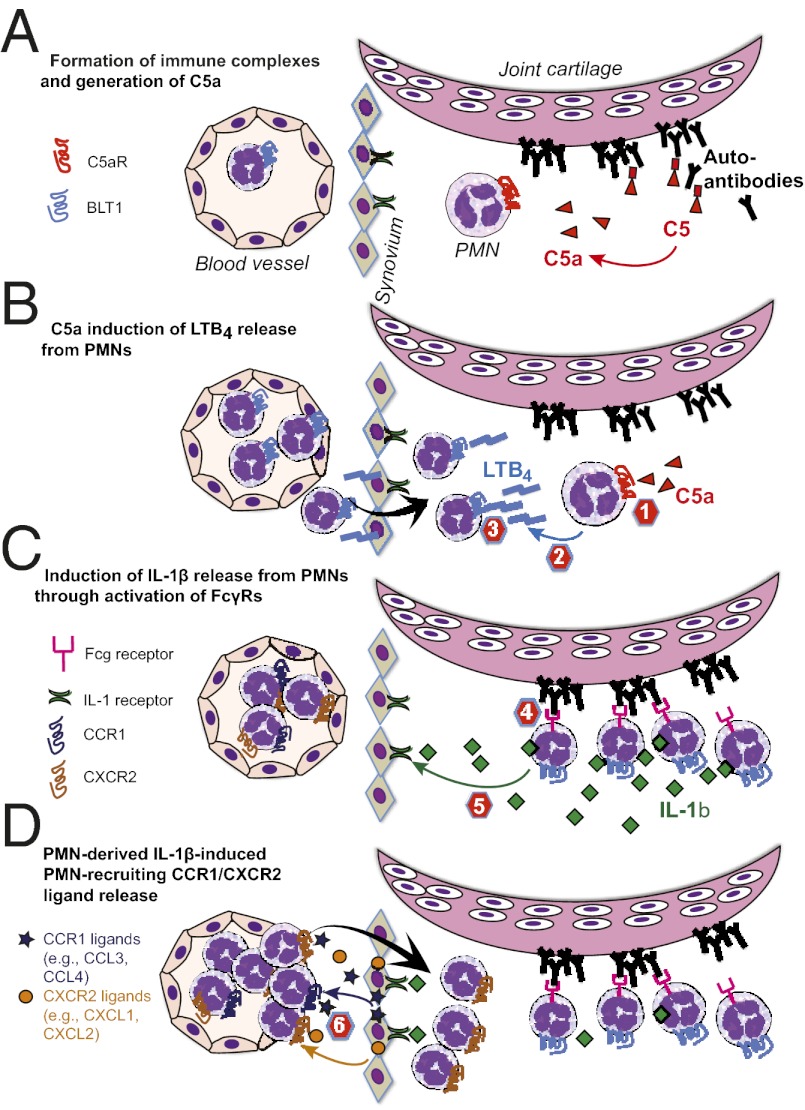Fig. P1.
Choreography of polymorphonuclear neutrophil (PMN) recruitment in autoantibody-induced arthritis. C5aR and FcγR work in sequence to enable neutrophil-directed neutrophil recruitment. (A) C5a is generated in the joint due to immune complexes deposited on the cartilage surface. (B) C5a activates the first neutrophils in the joint to release LTB4, which in turn recruits a wave of neutrophils into the joint. (C) These neutrophils are activated by immune complexes on the cartilage surface via FcγRIII signaling to release IL-1β, which is a potent activator of chemokine release from synovial cells and endothelial cells in the joint. (D) The release of neutrophil-active chemokines amplifies the recruitment of neutrophils into the joint and enables the perpetuation of arthritis. This nonredundant cascade provides multiple potential therapeutic targets, which are indicated numerically in the schematic, such as 1, C5aR activation; 2, LTB4 generation; 3, BLT1 activation; 4, FcγRIII activation; 5, IL-1R activation; and 6, CCR1 and CXCR2 activation.

